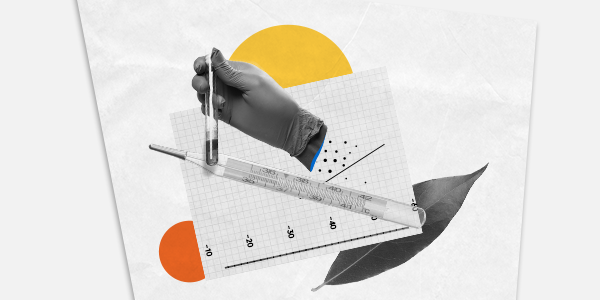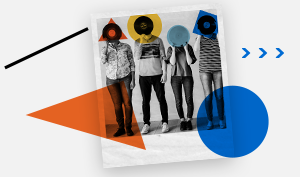 Professor of Philosophy and Psychology, University of Pennsylvania
Professor of Philosophy and Psychology, University of Pennsylvania
Director, Master of Behavioral and Decision Sciences
Cristina Bicchieri is the S.J. Patterson Harvie Professor of Social Thought and Comparative Ethics at the University of Pennsylvania, and Director of the Master of Behavioral and Decision Sciences program. She is a foremost scholar of rational choice and philosophy of social science, and a leader in behavioral ethics.
In this conversation, Kelly and Cristina discuss how social norms and nudging norm behavior can be a powerful way to influence behavior during the pandemic. Cristina also discusses the interesting research she has been doing during the pandemic.

Kelly Peters: I'd love for us to start with understanding how you think social norm insights can play a crucial role in helping us fight the pandemic. We've had some challenges with people complying with behaviors that would basically give us the solution, such as wearing a mask in public and engaging in physical distancing. Please share some of your perspectives.
Cristina Bicchieri: This is really a great question. The interesting thing is that we are facing a major social experiment unwillingly. We're in the middle of a social dilemma. What does it mean? It means that individual and collective interest may diverge. So, people have had to wear masks, to practice social distancing, lockdown in many places. Of course, this is costly personally, even from an economical viewpoint, but psychologically, it is costly to people as we would like to go out.
So, this is a perfect time for what we call norm nudging. Why norm nudging? Because the behaviors I've just described are interdependent, which means that our preference for adopting certain behaviors (wearing masks, keeping distance, lockdown etc.) in many cases, and for most people, depend on what we expect other people to do, and also on what we think other people think is appropriate or inappropriate to do.
I choose to put the mask on or not, depending on what I observe, or I think, or I believe other people are doing. If most people don't do it, maybe I have less of an incentive to do it myself.
The interesting thing is that norm nudging tries to change or induce these expectations. The typical case of norm nudging is when you give people information about what many other people are doing and what's behind this information, this idea of sending this message.
Kelly Peters: A friend of mine went into the travel industry last year. She bought a company dedicated to women who love to adventure and travel around the world, which is fun. It's a really neat thing and it fits her incredibly well. Now she's struggling with these massive questions about how do we help travelers feel safe? Is it possible, first of all, to be safe?
The science says it's possible to be safe with all of these conditions being met, as best we know. But one of the challenges that she's finding extraordinarily difficult to help contribute to is her clients in the airline industry have passengers who at some point in the flight, remove their mask. They're taking off their masks in flight.
The only solution, historically, to non-compliance is the orders, shoves, nudges. Threats of being arrested or being escorted off the plane if you're still on the runway, or what they're doing now, turning the plane around. She was wondering, and this has happened a few times, is there something else that can be one? I was wondering what your point of view was; is there something else that can be done to help discourage this kind of behavior?
Cristina Bicchieri: I heard about this. The consequences are very serious because the company may ban this person from traveling with the company. I don't know for how long, but there is a ban. You know, it's always better to convince than to punish. This is my line always.
You want to convince people, but some people, for some reason, may not be convinced. Or you have to use harder means. For example, in Italy, when there was a lockdown it was very serious. Tons of people were dying. We had police cars in the street, and if you're going walking or with a car or with a bicycle, they will stop you and you need to show a document. You download it from the internet, and you declare why you're out. The police gave incredible fines because people were not complying at the beginning. The interesting thing is that sometimes, either because they are not convinced about the message, or because the messages are unclear, when there is uncertainty and ambiguity, unfortunately, people may not follow through. So, because of the situation, people were trying to escape the rules. There was need for very, very serious containment. Then things went on much better.
What's happening now is that there are new waves in Europe. The new waves are young people, and again, young people that are told the typical information that only old people die. Young people don't say it should be okay, but that’s what they infer. You have to send appropriate messages to young people. So, the message again, should not be ambiguous, should be rightly directed to that particular reference group, we call them reference group, and should be clear and not sending conflicting information.

Kelly Peters: Speaking of room for interpretation around a new behavior, we're working with an organization that has launched a notification app; some call them tracing apps, but in the same way that we've all recognized that social distancing is not the right term, it's physical distancing. We're calling this a notification app versus a tracing app just because of the connotations that go with those terms. How could we create a new norm around these notification or tracing apps?
Cristina Bicchieri: This is a great question. You're absolutely right, language is everything. The moment you say tracing, people feel “oh, you're controlling me. I don't want to be controlled. I want my privacy”, so this is very important. But it's also important for people to be told and reminded that as they have rights, they have obligations. My right ends where your right begins. My freedom ends where your freedom begins. I have an obligation to respect your freedom and your health, your right to be healthy, as you have an obligation to respect mine.
In Italy, there was a very bad reaction to the idea of tracing because of the language of tracing. People said, “No, no, no, no, my God, what are you doing to me?”, and so they were not putting the application on their phones. It was really quite a big flop. The issue is, and this is another interesting point that I made at the beginning, but I want to make it again, how do you create a norm in which people start using the application? Now, we are in a situation when people know that most people are not using it. So, you cannot lie to people and say 80% of the population is using it because people look around, they know their friends, they know nobody is using it. To say that that tells me it is not credible.
What we do, when the descriptive expectation is very low, is try to find situations where people are doing very well. In this case, with this application, it is not the whole population; it is not even the majority, but there is a minority that uses it and is doing well. So, you have to focus on that, on a minority who's doing well. I'm sure there are people that you know are going to use it. What does it mean that they are doing well? They are not only protecting other people but protecting themselves. Basically, when I give information about the compliant minority, because the majority is not compliant, I always try to make people realize that it is in their interest to comply, that there is a reward for compliance that is not just a moral action, but it is an action that is in their interest in the end.
Kelly Peters: So, if we were able to take your approach, your recommendation, find this minority and spend our first round of time and money cultivating this minority. Then they would help us unleash what we need to now leverage, this establishment of a norm that is benchmarked off of this group. That makes a lot of sense, and that seems something we would be able to execute, this psychology and marketing in a staged way.










